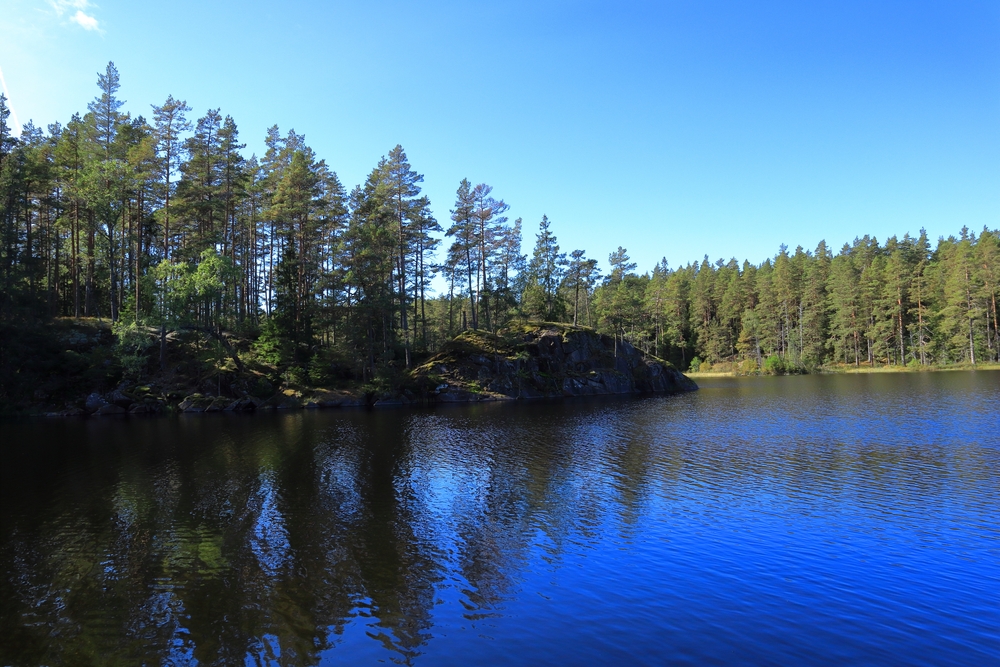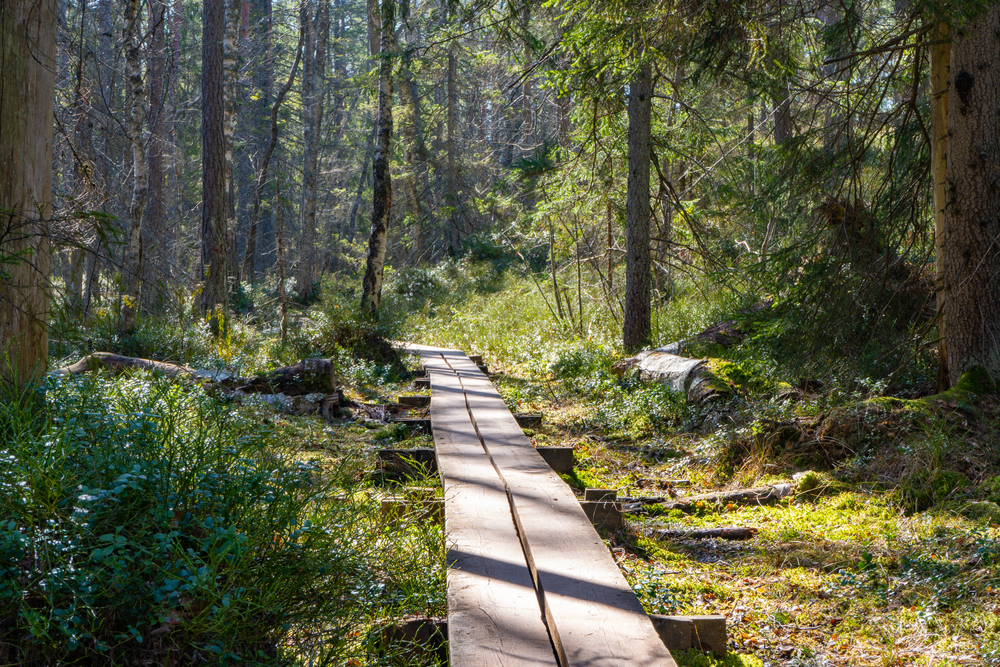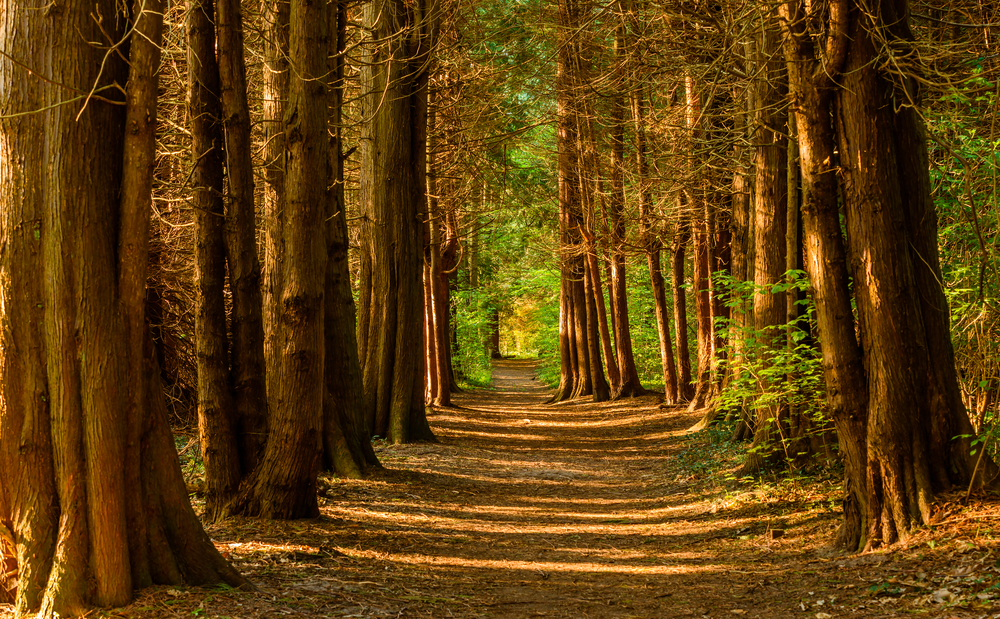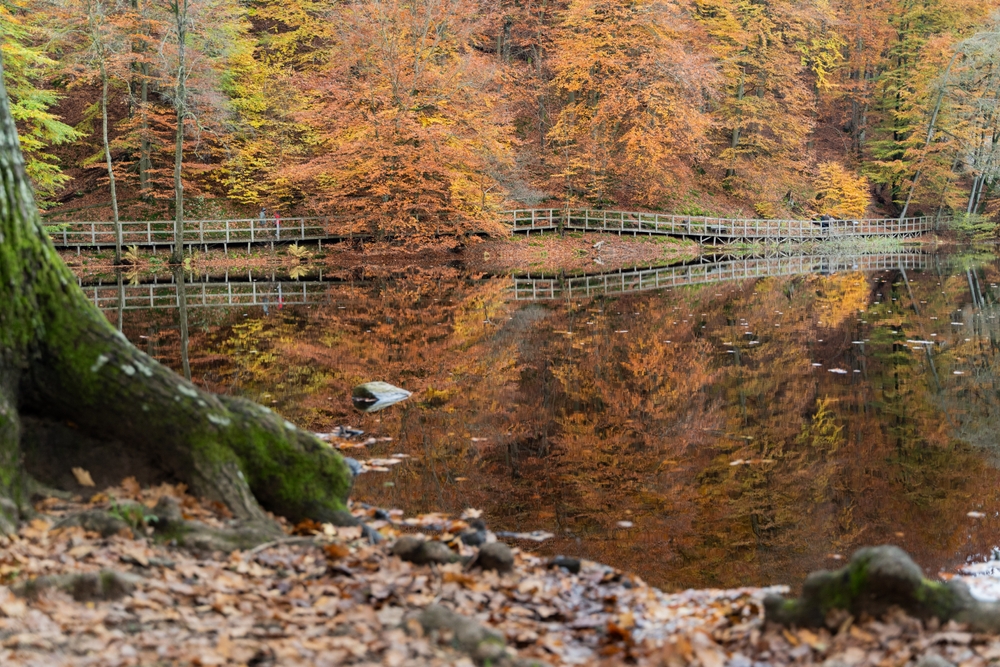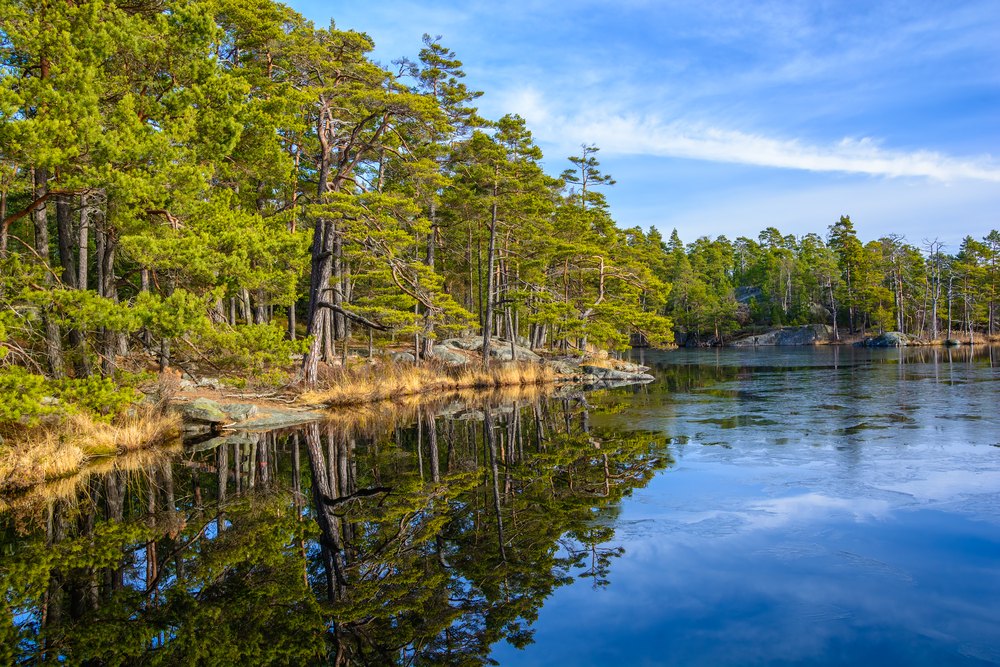Tiveden Overview
Tiveden National Park, known as Tivedens Nationalpark in Swedish, is a stunning protected area located in south-central Sweden, spanning approximately 19 square miles (50 square kilometers).
Nestled between the two large lakes, Vänern and Vättern, the park is situated in both Västra Götaland and Örebro counties. Tiveden is characterized by its rugged and untamed landscape, shaped by glacial activity thousands of years ago. It is well known for its dense, ancient forests, dramatic rock formations, deep fissures, and crystal-clear lakes.
Towering cliffs and massive boulders, some precariously balanced, create a sense of untouched wilderness that has remained largely unchanged for centuries. The terrain is rocky and uneven, with steep ridges and moss-covered valleys contributing to the park’s wild character.
One of the most famous landmarks within Tiveden is Stenkälla, a legendary rock formation said to be a place of old Norse worship, as well as the dramatic caves of Vitsandsgrottorna. Lake Stora Trehörningen, with its reflective waters and surrounding forests, is another highlight that draws visitors to its shores.
The biodiversity of Tiveden National Park is as remarkable as its landscape. The ancient woodlands, dominated by spruce and pine, provide habitat for a wide variety of wildlife. Visitors may spot moose wandering through the undergrowth, roe deer grazing in the clearings, and red foxes darting between the trees.
Lynx, although elusive, are known to inhabit the area, adding to the sense of wildness. The park is also home to a rich bird population, with species such as the black woodpecker, capercaillie, and the strikingly colorful Eurasian jay commonly observed.
During the warmer months, the calls of cuckoos and warblers fill the forest, creating an immersive natural experience for birdwatchers and nature lovers alike. The lakes and wetlands also provide habitat for amphibians, including frogs and newts, while the many caves and crevices serve as refuge for bats.
Tiveden is a favored destination for outdoor enthusiasts due to its numerous well-marked trails and opportunities for exploration. The park boasts an extensive network of hiking trails that take visitors through its dense forests, over rocky ridges, and along serene lakeshores.
One of the most popular routes is the Stenkällerundan, which leads through some of the most dramatic landscapes in the park, including giant boulders and hidden caves. Canoeing on Lake Stora Trehörningen is another popular activity, allowing visitors to experience the park from the water while enjoying its tranquil atmosphere.
Swimming in the clear lakes, camping in designated areas, and horseback riding along designated trails are also excellent ways to experience the wilderness of Tiveden.
Despite its protected status, Tiveden faces conservation challenges, particularly from climate change and human impact. Increased visitor numbers bring the risk of soil erosion and disturbance to sensitive wildlife habitats.
However, park management has implemented measures to mitigate these effects, including well-maintained trails, designated camping areas, and educational programs that promote sustainable tourism. The park remains a pristine example of Sweden’s ancient forests, thanks to these conservation efforts.








































































